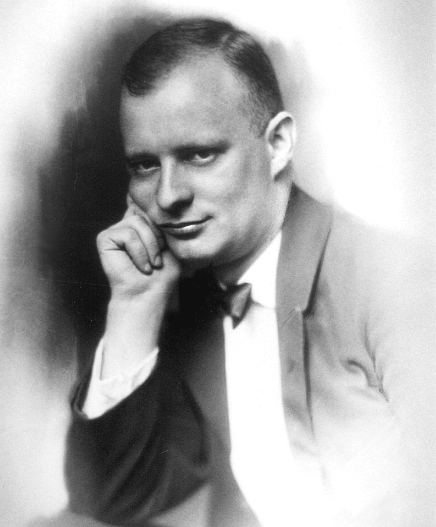
Kammermusik (Hindemith)
Kammermusik (Chamber Music) is the title for eight chamber music compositions by Paul Hindemith. He wrote them, each in several movements, during the 1920s. They are grouped in three opus numbers: Op. 24, Op. 36 and Op. 46. Six of these works, Kammermusik Nos. 2–7, are not what is normally considered chamber music – music for a few players with equally important parts such as a wind quintet – but rather concertos for a soloist and chamber orchestra.[1][2] They are concertos for piano, cello, violin, viola, viola d'amore and organ. The works, for different ensembles, were premiered at different locations and times. The composer was the soloist in the premiere of the viola concertos, while his brother Rudolf Hindemith was the soloist in the premiere of the cello concerto. Kammermusik is reminiscent of Bach's Brandenburg Concertos, also concertos for different solo and orchestra instruments, and in a neo-Bachian spirit of structure, polyphony and stability of motion.[3]
"Kammermusik No. 2" redirects here. For George Balanchine's ballet, see Kammermusik No. 2 (ballet).Kammermusik
24, 36 & 46
Eight compositions, each of several movements
1920s
Background[edit]
Between 1921 and 1927, the majority of Germany's composers were writing nationalistic music, as Germany was recovering from World War I. Many Germans were shocked by the Armistice, and one particular soldier, Adolf Hitler, blamed it on Germany's lack of cultural unity.[4] Over the course of his rise to political power, he repeatedly brought this up, with an emphasis on Richard Wagner, a composer whom he believed to be representative of true German culture.[4]
Hindemith was not among the composers writing for the cause of cultural unification; his works were largely exploratory of the wind medium.[5] Throughout his Kammermusik, he repeatedly used wind instruments. He utilized wind instruments in both works from Op. 24, with Kleine Kammermusik, Op. 24, No. 2, being a wind quintet for flute, oboe, clarinet, horn and bassoon. This work was experimenting with jazz and looking towards his colleague and friend Igor Stravinsky,[6] who coincidentally also explored jazz with his Three Pieces for Solo Clarinet (1918). Its third movement was the result of a letter he received from an American composer describing jazz. In Hindemith's Kleine Kammermusik, Op. 24, No. 2, the composer alludes to Stravinsky by utilizing repeated patterns, similar to repetitive patterns in a groove-like rhythm in that movement. Hindemith references jazz in movement titles such as "Shimmy" and "Ragtime".[5] The exploration of jazz by both Stravinsky and Hindemith reflects Ravel's practice of using Basque dance music. This work in particular would go on to become a staple in the wind quintet literature.
The six concertos of Kammermusik have been compared to Bach's Brandenburg Concertos. Hindemith pursued polyphony and a "Baroque stability of motion" as neo-Bachian elements, in a "post-war reaction against the twin emotional excesses of Romanticism and Expressionism".[3] Some musicologists and performers count only the numbered works as Hindemith's Kammermusiken, excluding the wind quintet.[7]
Kammermusik No. 1
24, No. 1
1922
31 July 1922: Donaueschingen
4
24, No. 2
1922
13 June 1922: Cologne
13 min.
5
36, No. 1
1924
Emma Lübbecke-Job
31 October 1924: Frankfurt
4
- piano
- 12 instruments
36, No. 2
1925
Elsa and Willi Hof
30 April 1925: Bochum
4
- cello
- 10 instruments
36, No. 3
1925
"Yashnykneshpeff for a dear lion's birthday"
17 September 1925: Dessau
5
- violin
- chamber orchestra
36, No. 4
1925
3 November 1927: Berlin, Kroll Opera House
4
- viola
- chamber orchestra
46, No. 1
1927
29 March 1928: Cologne
4
- viola d'amore
- chamber orchestra
46, No. 2
1927
1 August 1928: Frankfurt
3
- organ
- chamber orchestra